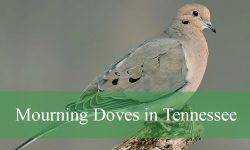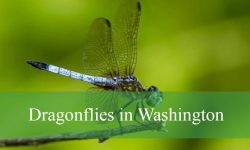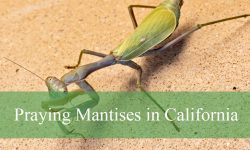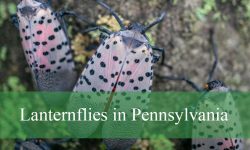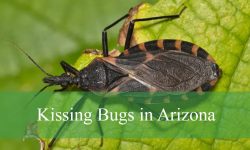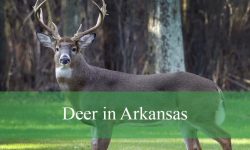North Carolina is home to a variety of ant species, but not all are harmless. Some ants deliver painful bites or stings that can cause irritation, allergic reactions, or even pose health risks. Understanding which species are dangerous is essential for homeowners, gardeners, and outdoor enthusiasts.
This guide covers six biting ants found across North Carolina, providing detailed information on identification, size, behavior, nesting habits, and sting severity. Each species is explained to help you recognize and avoid them effectively.
Exploring wooded areas, maintaining a lawn, or walking barefoot in a yard can lead to encounters with biting ants. Knowing what to look for can prevent painful experiences and protect both people and pets from ant stings.
Types of Biting Ants Found in North Carolina
Red Imported Fire Ant (Solenopsis invicta)
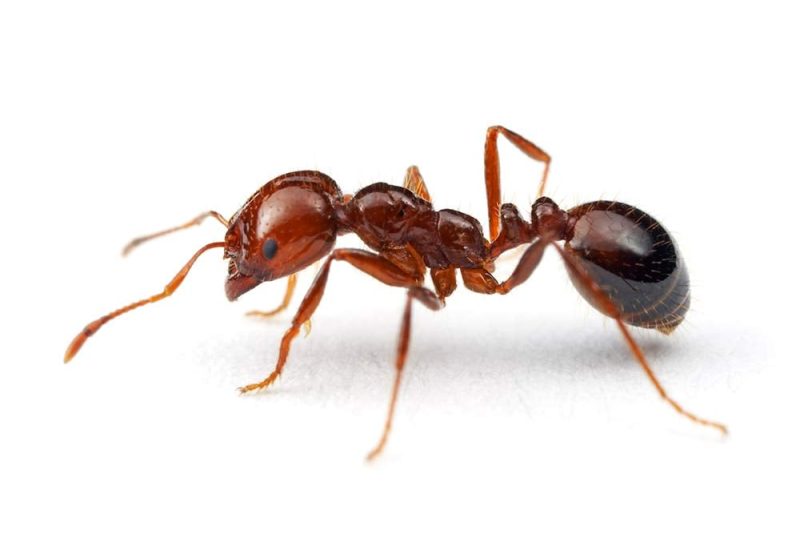
Identification & Size
Red imported fire ants are reddish to dark brown and polymorphic, meaning colonies contain workers of varying sizes. Minor workers are about 1/8 inch long, medium workers around 1/4 inch, and major workers can reach 1/3 inch. Queens are larger, around 1/3 inch, with a rounded abdomen. These ants have a two-segmented waist and two nodes between the thorax and abdomen, which helps distinguish them from native species.
Behavior & Colony Structure
Fire ants are highly aggressive and social. Colonies can contain thousands of ants and multiple queens. Workers perform different tasks based on size: minors care for the brood, majors defend the nest, and foragers seek food. These ants are territorial and will swarm intruders to protect their mounds.
Habitat & Nesting
They build large, conspicuous mounds in open, sunny areas like lawns, pastures, and parks. Mounds can reach over 18 inches in height with a diameter of up to 24 inches. They are adaptable and can nest under rocks, logs, and even in man-made structures. During flooding, they form rafts to survive and relocate.
Diet & Foraging
Fire ants are omnivorous, feeding on insects, seeds, and sugary substances. Foragers travel far from the nest to find food, leaving pheromone trails for others to follow. They are opportunistic feeders and can scavenge human food when available.
Sting & Health Risks
Fire ant stings inject venom that causes a burning sensation, redness, and pustules within hours. Allergic reactions can include swelling, dizziness, or even anaphylaxis in rare cases. Multiple stings can be especially dangerous for children, pets, or people with existing health conditions.
Seasonal Activity
Fire ants are most active in warm months, typically from late spring to early fall. They are less active in winter, retreating deep into their mounds. Mound activity increases after rain as ants repair and expand tunnels.
Interaction with Humans
Humans often encounter fire ants in yards, parks, and fields. Stings are common when mowing lawns, gardening, or walking barefoot. Preventive measures include avoiding disturbed mounds, wearing shoes outdoors, and using insecticide treatments.
Control Measures
Effective management includes baiting, mound treatment, and reducing nesting sites by keeping grass short. Professional pest control is recommended for large infestations. Preventing water accumulation in yards can also reduce mound construction.
Asian Needle Ant (Pachycondyla chinensis)
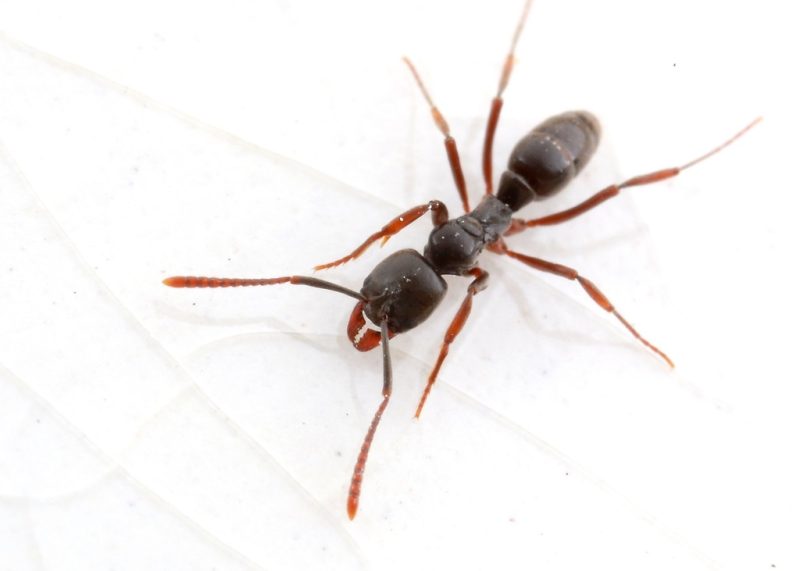
Identification & Size
Asian needle ants are medium-sized, 5–6.5 mm long, with dark brown to black bodies and lighter brown to orange legs and mandibles. Their slender build and two-segmented waist help distinguish them from other ants. Queens are larger and darker with slightly elongated abdomens.
Behavior & Colony Structure
These ants are less social than fire ants but still live in colonies that can contain multiple queens. They are solitary foragers, often hunting alone or in small groups rather than forming large trails. Colonies are aggressive when disturbed, and workers sting readily.
Habitat & Nesting
Asian needle ants prefer moist, shaded areas such as leaf litter, logs, under rocks, and in dense vegetation. They are increasingly common in the southeastern United States, including North Carolina. Nests are often hidden, making detection challenging.
Diet & Foraging
They are omnivorous, preying on insects, small invertebrates, and scavenging sugary substances. Foraging occurs throughout the day, and ants are known to travel long distances relative to colony size.
Sting & Health Risks
The sting is sharp and painful, injecting venom that can cause intense burning and prolonged discomfort. In sensitive individuals, stings can trigger severe allergic reactions, including anaphylaxis. Children and older adults are most vulnerable.
Seasonal Activity
Active primarily in spring through fall, Asian needle ants reduce activity in cooler months. They are most commonly encountered in damp conditions after rain or near shaded areas.
Interaction with Humans
Humans may encounter these ants while gardening, walking in wooded areas, or handling mulch and logs. Wearing gloves and protective clothing is advised when in areas likely to harbor nests.
Control Measures
Managing these ants involves removing logs, stones, and leaf litter near homes. Insecticide baits may reduce colony numbers. Immediate medical attention is necessary if stung and allergic reactions occur.
Carpenter Ant (Camponotus spp.)
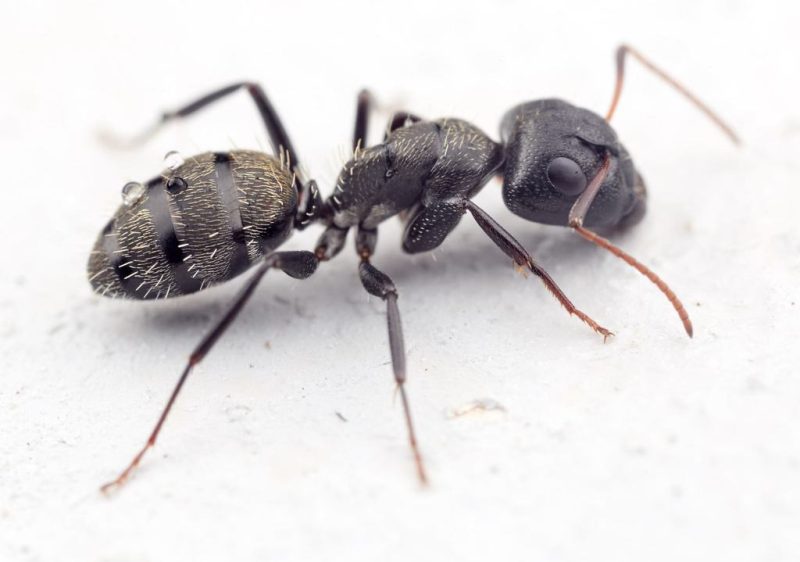
Identification & Size
Carpenter ants are large, 1/4–1/2 inch for workers, with queens up to 3/4 inch. They are usually black or reddish-brown with a single node between the thorax and abdomen. Their size and coloration help differentiate them from smaller ant species.
Behavior & Colony Structure
Carpenter ants live in large colonies with a single or multiple queens. Workers have specialized roles: some care for larvae, others forage or defend the nest. Colonies can expand significantly, especially in moist environments.
Habitat & Nesting
They nest in moist, decayed, or hollowed wood. Carpenter ants do not eat wood but excavate it to build galleries. Nests can be found in dead trees, stumps, and wooden structures, including homes.
Diet & Foraging
They are omnivorous, consuming insects, honeydew from aphids, and household foods like sweets and meat. Foraging occurs mostly at night, sometimes traveling long distances from the nest.
Bite & Health Risks
Carpenter ants can bite using their mandibles, causing mild pain or a burning sensation. Unlike fire ants, they do not inject venom, so bites are generally harmless. The main risk is structural damage caused by nesting in wood.
Seasonal Activity
Most active from spring through fall, carpenter ants reduce foraging in cold months. Nests inside homes may remain active year-round if warm and moist.
Interaction with Humans
Humans often notice carpenter ants when they see winged reproductives in spring or hear rustling in walls. They can contaminate food while foraging indoors. Prompt detection is key to preventing wood damage.
Control Measures
Repair leaks, remove decayed wood, seal cracks, and maintain dry conditions. Professional treatment may be necessary for significant infestations.
Little Black Ant (Monomorium minimum)
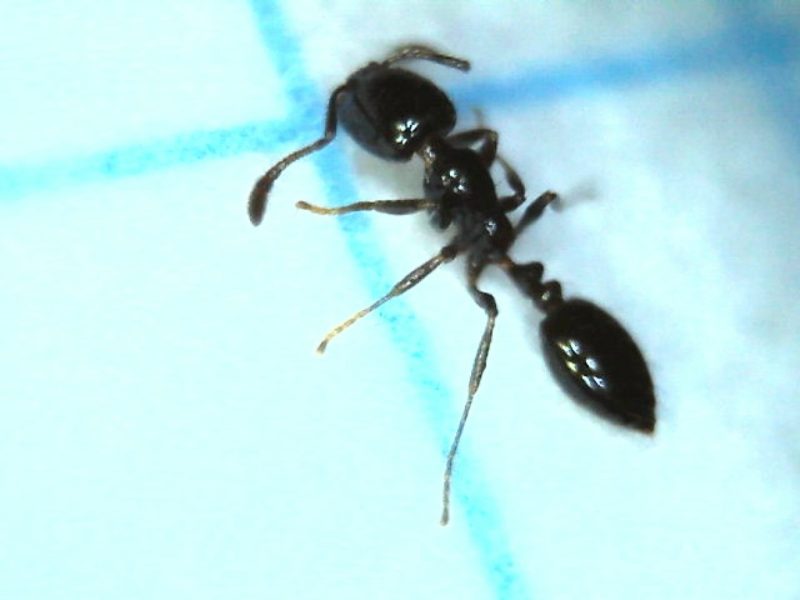
Identification & Size
Little black ants are tiny, about 1/16 inch long, shiny black, with a two-segmented waist. Queens are slightly larger with elongated abdomens. Their small size allows them to infiltrate cracks and crevices easily.
Behavior & Colony Structure
Colonies can contain multiple queens and hundreds of workers. They are highly social, with workers caring for brood, foraging, and defending the nest cooperatively. Unlike larger ants, they form small foraging trails indoors and outdoors.
Habitat & Nesting
Nests are built in soil, mulch, under stones, or indoors in wall voids. They thrive in warm, moist environments and may invade kitchens, pantries, and bathrooms in search of food and water.
Diet & Foraging
They are opportunistic feeders, consuming sugary foods, proteins, and small insects. Foraging occurs in small groups, often forming long trails to food sources.
Bite & Health Risks
Bites are rare and minor, causing slight irritation. They do not inject venom and are not known to spread diseases, but large infestations can contaminate food.
Seasonal Activity
Active year-round indoors; outdoor activity peaks in warmer months. Nests may relocate if disturbed or if food sources are scarce.
Interaction with Humans
Humans encounter these ants primarily indoors around kitchens and food storage areas. Preventive measures include sealing entry points and keeping food covered.
Control Measures
Seal cracks, remove food sources, and maintain cleanliness. Insecticidal baits may be used for large infestations. Monitoring and early detection help prevent major indoor problems.
Field Ant (Formica spp.)
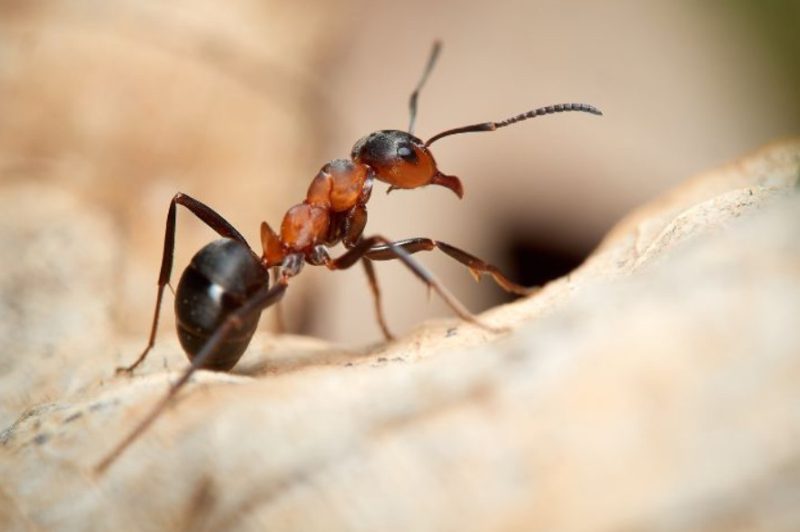
Identification & Size
Field ants range from 4 to 8 mm in length. They may be black, brown, yellowish, or bi-colored (red and black). Their bodies are smooth with a single node waist, making them distinguishable from other ants.
Behavior & Colony Structure
Colonies are large and often territorial. Workers forage for insects and sugary substances, and some species produce formic acid to deter predators. Colonies have one or multiple queens, depending on the species.
Habitat & Nesting
They prefer lawns, gardens, and fields, nesting in soil or decayed wood. Mounds can be conspicuous and interfere with lawn maintenance. Nests are often rebuilt seasonally as old mounds deteriorate.
Diet & Foraging
Omnivorous, they feed on small insects, honeydew, and plant secretions. Workers forage actively during the day, leaving pheromone trails for guidance.
Bite & Health Risks
They do not sting but will bite if provoked. Some species spray formic acid into the wound, causing a burning sensation. While painful, their bites are generally not dangerous.
Seasonal Activity
Most active in spring and summer. They retreat deeper into nests during colder months and reemerge when temperatures rise.
Interaction with Humans
Humans may encounter field ants in lawns and gardens. Bites are rare, but their mounds can disrupt recreational areas. Preventive lawn care and mound removal reduce human contact.
Control Measures
Treating nests with insecticides and maintaining well-kept lawns can minimize infestations. Removing decayed wood and debris reduces nesting sites. Professional help may be required for extensive infestations.
Thief Ant (Solenopsis molesta)
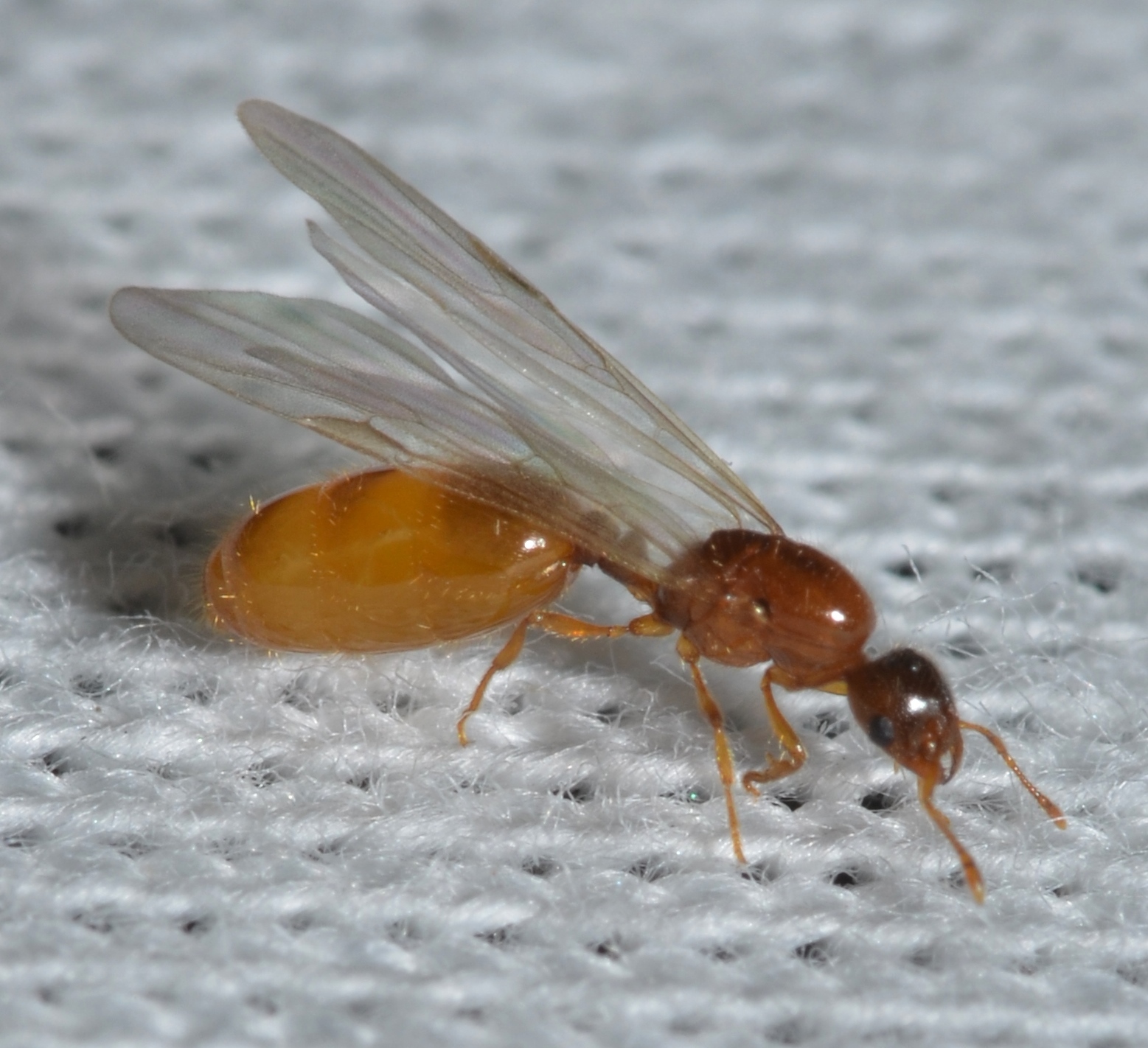
Identification & Size
Thief ants are very small, typically 1/32–1/16 inch long, and yellowish to light brown in color. They have a two-segmented waist and are similar in appearance to small fire ants but are much tinier. Queens are slightly larger with elongated abdomens. Their small size allows them to enter cracks and food containers easily.
Behavior & Colony Structure
Thief ants are named for their habit of stealing food and brood from other ant colonies. Colonies are usually small, but highly secretive, and often contain multiple queens. Workers perform typical ant duties such as caring for the brood, foraging, and defending the nest, but they tend to be less aggressive toward humans.
Habitat & Nesting
Thief ants nest in soil, under rocks, inside decaying wood, or within buildings. Indoors, they often invade kitchens, pantries, and wall voids. They prefer warm, moist environments and may build hidden satellite nests near food sources.
Diet & Foraging
They are omnivorous, feeding on fats, proteins, and sugars. Thief ants frequently raid the colonies of other ants to steal larvae and pupae. They also scavenge crumbs and grease indoors, making them a common household pest.
Bite & Health Risks
Thief ants can bite, but their tiny size makes it difficult to feel, and they do not sting. Bites may cause minor irritation but are generally harmless. They are not known to transmit diseases but can contaminate food sources.
Seasonal Activity
Active year-round indoors, thief ants increase outdoor activity in warm months. Nests may shift if food sources are disturbed.
Interaction with Humans
Humans most often notice thief ants when they appear in kitchens, pantries, or near pet food. Because of their small size and secretive behavior, they can be difficult to detect until a significant infestation develops.
Control Measures
Sealing cracks, keeping food stored in airtight containers, and maintaining cleanliness are essential. Insecticidal baits and treatments around nesting areas can help reduce populations. Professional pest control may be needed for larger infestations.
Comparison of Biting Ants in North Carolina
| Species | Worker Size | Sting/Bite Severity | Nesting Habitat | Seasonal Activity | Colony Type |
|---|---|---|---|---|---|
| Red Imported Fire Ant (Solenopsis invicta) | 1/8–1/4 inch | Strong sting, venomous, causes burning & pustules | Large mounds in open, sunny areas, lawns, fields, under logs/rocks | Late spring–early fall; less active in winter | Large colonies with multiple queens |
| Asian Needle Ant (Pachycondyla chinensis) | 5–6.5 mm | Painful sting, venomous, can trigger allergic reactions | Moist, shaded areas: leaf litter, under logs/stones | Spring–fall; reduced activity in cooler months | Colonies with multiple queens; solitary foragers |
| Carpenter Ant (Camponotus spp.) | 1/4–1/2 inch (workers), queens up to 3/4 inch | Mild bite with burning sensation; no venom | Moist, decayed or hollowed wood, dead trees, stumps, wooden structures | Spring–fall; indoor nests may remain active year-round | Large colonies with single or multiple queens |
| Little Black Ant (Monomorium minimum) | 1/16 inch | Minor bite; slight irritation; not venomous | Soil, mulch, under stones, indoor wall voids | Active year-round indoors; outdoor activity peaks in warm months | Colonies with multiple queens and hundreds of workers |
| Field Ant (Formica spp.) | 4–8 mm | Bites; some species spray formic acid causing burning | Soil, decayed wood, lawns, gardens, fields | Spring–summer; retreat deeper in winter | Colonies with one or multiple queens |
| Thief Ant (Solenopsis molesta) | 1/32–1/16 inch | Tiny bite; minor irritation; not venomous | Soil, decayed wood, under rocks, indoors near food | Active year-round indoors; more active outdoors in warm months |
FAQs About Biting Ants in North Carolina
What are the most common biting ants in North Carolina?
The most common biting ants include Red Imported Fire Ants, Asian Needle Ants, Carpenter Ants, Little Black Ants, Field Ants, and Thief Ants. Each species has unique behaviors, nesting habits, and sting or bite severity.
How can I identify Thief Ants?
Thief Ants are very small, 1/32–1/16 inch, yellowish to light brown, and have a two-segmented waist. They often nest near food sources and can enter homes through tiny cracks.
Are Thief Ant bites dangerous?
Thief Ant bites are minor and usually go unnoticed due to their tiny size. They do not sting or inject venom, so they are generally harmless. Their main concern is contaminating food indoors.
How can I identify Red Imported Fire Ants?
Red Imported Fire Ants are reddish-brown, polymorphic ants with workers ranging from 1/8 to 1/4 inch. They build large, conspicuous mounds in open sunny areas and have a two-segmented waist with two nodes between the thorax and abdomen. Their stings are venomous and can cause burning and pustules.
Are Asian Needle Ant stings dangerous?
Yes, their sting is painful and venomous. Sensitive individuals may experience severe allergic reactions, including anaphylaxis.
Do Carpenter Ants bite or sting humans?
Carpenter ants can bite using their mandibles, causing mild pain or a burning sensation. They do not sting or inject venom.
Can Little Black Ants or Field Ants sting humans?
Little Black Ants generally do not sting and cause minor irritation. Field Ants do not sting but some species spray formic acid into bites, causing a burning sensation.
How can I prevent ant infestations in my home?
Seal cracks, store food in airtight containers, keep the house clean, remove decayed wood and leaf litter, and maintain yards to deter ants.

